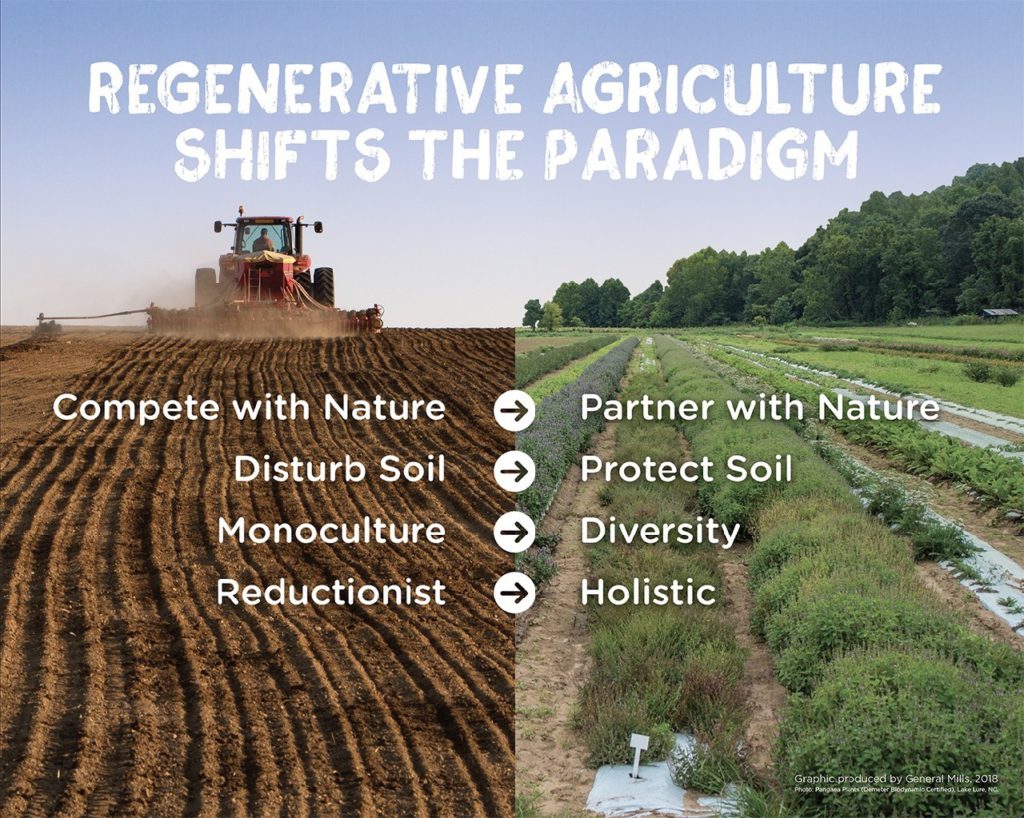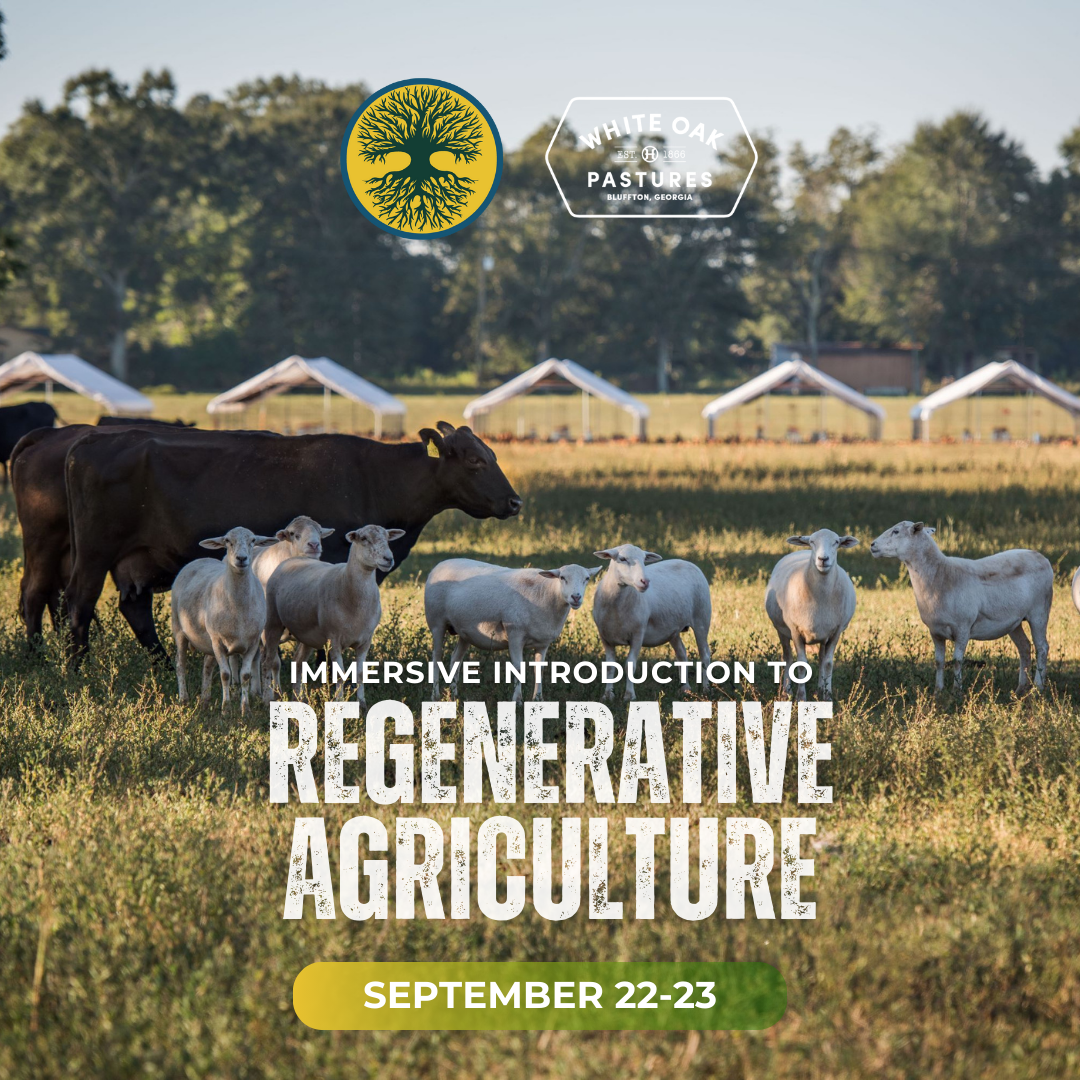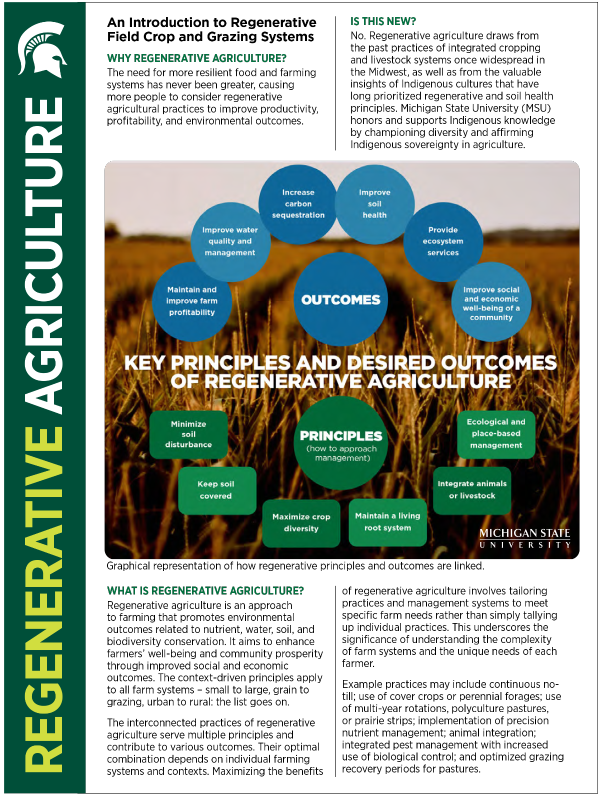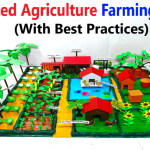Imagine a world where farming not only feeds you but also heals the planet. That’s the promise of regenerative agriculture.
It’s more than just a method; it’s a movement that invites you to rethink how food is grown. You’re probably aware of the environmental issues we face—depleted soils, polluted waterways, and a warming climate. What if there was a way to reverse these problems, improve your health, and support local farmers all at once?
Regenerative agriculture aims to do just that. This approach isn’t just about sustainability; it’s about renewal and growth. As you read on, you’ll discover how this practice can transform not only agriculture but also your life and the world around you. Unlock the secrets of nurturing the earth while nourishing yourself, and see why regenerative agriculture might just be the future of food. Ready to dig deeper? Let’s get started.

Principles Of Regenerative Agriculture
Regenerative agriculture focuses on restoring soil health, enhancing biodiversity, and improving water cycles. It involves practices like crop rotation and no-till farming. These methods aim to create sustainable and resilient farming systems that benefit both the environment and the community.
Regenerative agriculture is transforming the way we think about farming. It goes beyond just growing food—it’s about restoring and revitalizing the land. It’s a system of farming principles and practices that seeks to improve soil health, increase biodiversity, and enhance the ecosystem. These principles can lead to sustainable and resilient food production. As you delve into regenerative agriculture, consider how these practices can impact not just your garden but the planet. ###Soil Health And Biodiversity
Healthy soil is the cornerstone of regenerative agriculture. It’s alive with microorganisms that break down organic matter and recycle nutrients. You can boost soil health by reducing chemical inputs and encouraging natural soil processes. Plant diversity is crucial, too. The more varied your crops, the more resilient your land becomes. Different plants contribute unique benefits, enhancing the ecosystem’s balance. How can you introduce diversity into your garden? ###Minimal Disturbance
Regenerative agriculture emphasizes minimal soil disturbance. Think of soil as a living entity that thrives when left undisturbed. Tilling can disrupt beneficial organisms and lead to erosion. Instead, consider no-till or low-till practices. These methods preserve soil structure and maintain its natural fertility. Have you tried leaving your soil alone and noticed the difference in its vitality? ###Cover Crops And Crop Rotation
Cover crops are like blankets for your soil. They protect it from erosion, suppress weeds, and enhance nutrient cycling. By planting cover crops, you can improve soil health even when your main crops aren’t growing. Crop rotation is another key principle. Rotating crops prevents pests and diseases from taking hold. It also balances nutrient demands, keeping your soil fertile. What rotations have you experimented with, and what benefits have you noticed? ###Integration Of Livestock
Livestock can play a vital role in regenerative agriculture. Animals naturally fertilize land and help manage weeds. Their grazing patterns can stimulate plant growth and improve soil health. Consider integrating livestock into your farming practices. How could animals contribute positively to your land management? Are there ways you can balance their impact on the ecosystem? ###Building Organic Matter
Organic matter is essential for soil vitality. Composting and mulching can build organic matter, improving soil structure and water retention. These practices enrich the earth and support plant growth. What steps can you take to increase organic matter in your garden? How might this change the way your plants thrive? Regenerative agriculture is more than a set of principles—it’s an opportunity to reconnect with nature. As you consider these practices, think about how they could transform your approach to farming and gardening. What changes are you inspired to make?
Benefits For Soil Health
Regenerative agriculture boosts soil health by enhancing its organic matter and biodiversity. This approach improves water retention and promotes nutrient cycling. Healthier soil leads to better crop yields and reduces the need for chemical fertilizers.
Regenerative agriculture is more than a farming technique; it’s a movement towards healthier soil and sustainable ecosystems. By adopting regenerative practices, you can witness incredible improvements in soil health. But what exactly makes the soil so much better through these methods? Let’s dive into the benefits of regenerative agriculture for soil health.Improved Soil Structure
Have you ever noticed how some soils are crumbly and easy to work with, while others are compacted and tough? Regenerative agriculture practices such as cover cropping and reduced tillage can transform your soil’s structure. These techniques help increase organic matter, making the soil more porous and enhancing root growth. This means better water infiltration and less runoff, leading to healthier plants.Enhanced Nutrient Cycling
Healthy soil is like a bustling city of microorganisms, each playing a role in nutrient cycling. Regenerative methods, like composting and crop rotation, foster this microbial community. They break down organic material, releasing essential nutrients back to the soil. This natural process can reduce your reliance on synthetic fertilizers, saving you money and supporting the environment.Increased Soil Biodiversity
Imagine your soil as a vibrant ecosystem teeming with life. Regenerative agriculture promotes diverse plant species and habitats, boosting soil biodiversity. This diversity encourages beneficial insects and microbes, which help control pests and diseases naturally. The result? A resilient farm ecosystem that thrives without excessive chemical inputs.Better Water Retention
Water is a precious resource, and soil’s ability to retain it is crucial for farming success. Regenerative practices enhance soil’s capacity to hold moisture. Techniques like mulching and agroforestry increase organic matter, which acts like a sponge. Your crops will better withstand droughts, and you’ll use less water overall, which is great for your wallet and the planet.Reduction In Soil Erosion
Soil erosion can wash away your land’s most valuable asset: its topsoil. By maintaining a constant soil cover through strategies like cover cropping and no-till farming, you can protect against erosion. These practices anchor the soil, reducing wind and water erosion. It’s like putting a protective shield over your farm, preserving its fertility for future generations. Do you want to see your soil thrive and your yields improve? Consider integrating regenerative agriculture techniques into your farming practices. It’s not just about improving soil health; it’s about building a sustainable future for you and your community.Impact On Biodiversity
Regenerative agriculture offers a promising path for enhancing biodiversity. This farming method focuses on restoring and maintaining healthy ecosystems. Diverse plant and animal life thrive under these conditions. Farmers use practices that support ecological balance. This leads to richer biodiversity on and around farms.
Impact On Wildlife
Regenerative agriculture creates habitats for wildlife. Birds, insects, and small mammals find homes in cover crops. These crops provide shelter and food. More wildlife means a balanced ecosystem. Predators and prey coexist naturally.
Soil Health And Biodiversity
Healthy soil supports diverse microbial life. Regenerative practices improve soil structure and fertility. This encourages a variety of plants to grow. Different plants attract various insects and animals. The soil becomes a living ecosystem.
Pollinator Populations
Pollinators thrive in regenerative farming environments. Flowers from cover crops attract bees and butterflies. These pollinators increase plant reproduction and diversity. A healthy pollinator population boosts crop yields naturally.
Resilience To Climate Change
Diverse ecosystems are more resilient to climate change. Regenerative agriculture builds this resilience. Biodiversity helps ecosystems adapt to changing conditions. This stability supports long-term farming success.
Increased Plant Diversity
Plant diversity is a cornerstone of regenerative agriculture. Farmers grow multiple crops in the same field. This diversity reduces pest problems naturally. It also leads to healthier, more productive soil.
Economic Viability And Challenges
Regenerative agriculture is gaining attention for its environmental benefits. But what about its economic viability? Farmers are eager to know if it can be profitable. Regenerative practices aim to enhance soil health, boost biodiversity, and reduce input costs. Yet, transitioning from conventional farming involves challenges. These challenges can impact financial outcomes. Understanding the economic aspects is crucial for farmers considering this shift.
Cost Of Transitioning
Switching to regenerative agriculture involves initial costs. Farmers may need new equipment. Soil amendments and cover crops require investment. These costs can be a barrier. Yet, they are often necessary for long-term benefits. Farmers should plan for these expenses early.
Market Opportunities
Regenerative agriculture offers unique market opportunities. Consumers show interest in sustainable products. This interest creates a demand for regenerative crops. Farmers can sell their produce at premium prices. Connecting with the right buyers is essential. This can enhance profitability.
Access To Resources
Access to information and resources is vital. Farmers need training and support. This helps them adopt regenerative methods effectively. Governments and NGOs can provide necessary resources. Financial assistance can ease the transition. Knowledge sharing among farmers also plays a role.
Risk Management
Transitioning to new methods carries risks. Farmers may face yield fluctuations initially. This can affect income stability. Diversifying crops and practices helps manage these risks. Insurance options tailored to regenerative practices can also help.
Long-term Economic Benefits
Regenerative agriculture promises long-term economic benefits. Improved soil health leads to higher yields over time. Reduced dependency on chemical inputs cuts costs. Enhanced ecosystem services support farm resilience. This stability can lead to better financial outcomes.

Conclusion
Regenerative agriculture offers hope for a healthier planet. It restores soil health. Farmers see better yields and soil retains more water. This approach protects biodiversity and reduces carbon footprint. It’s a sustainable path forward. Communities benefit from nutritious food and cleaner air.
The environment heals, and future generations thrive. Learning about regenerative practices is essential. Every small action counts. Start with soil, seeds, and support local farmers. Embrace regenerative agriculture today. It’s a step towards a sustainable future. Let’s nurture our land wisely and ensure lasting change.
Together, we can make a positive impact.


